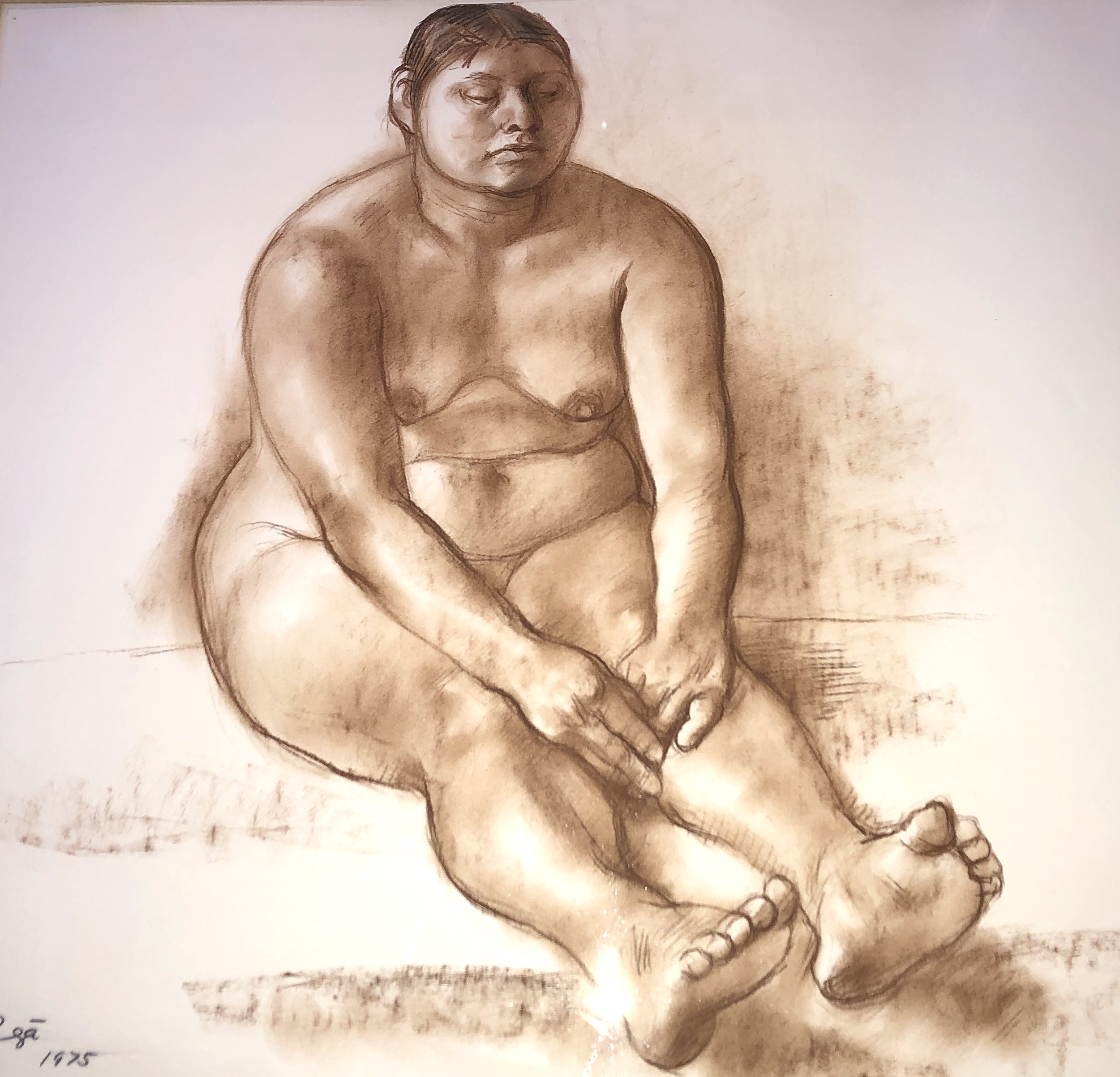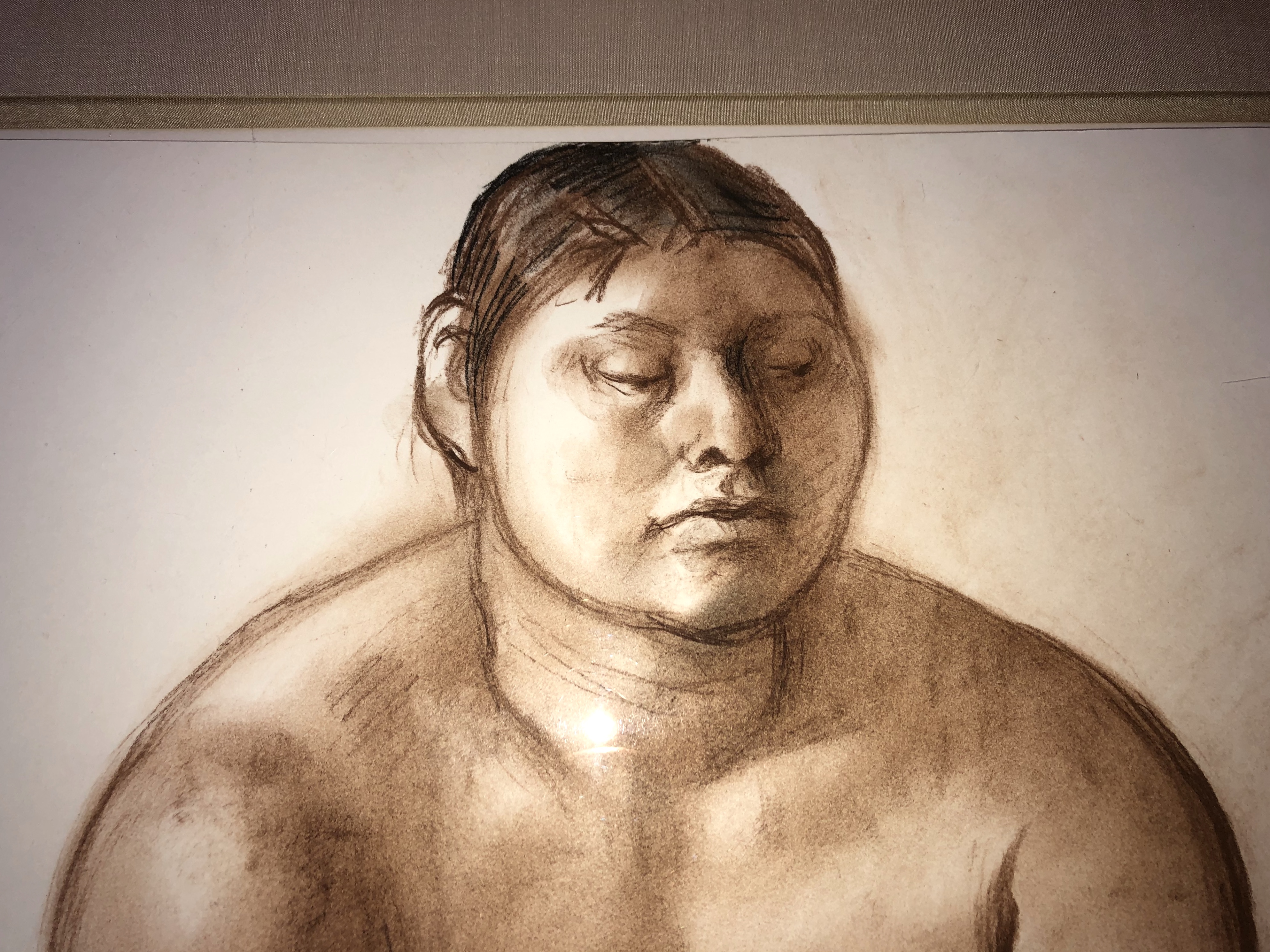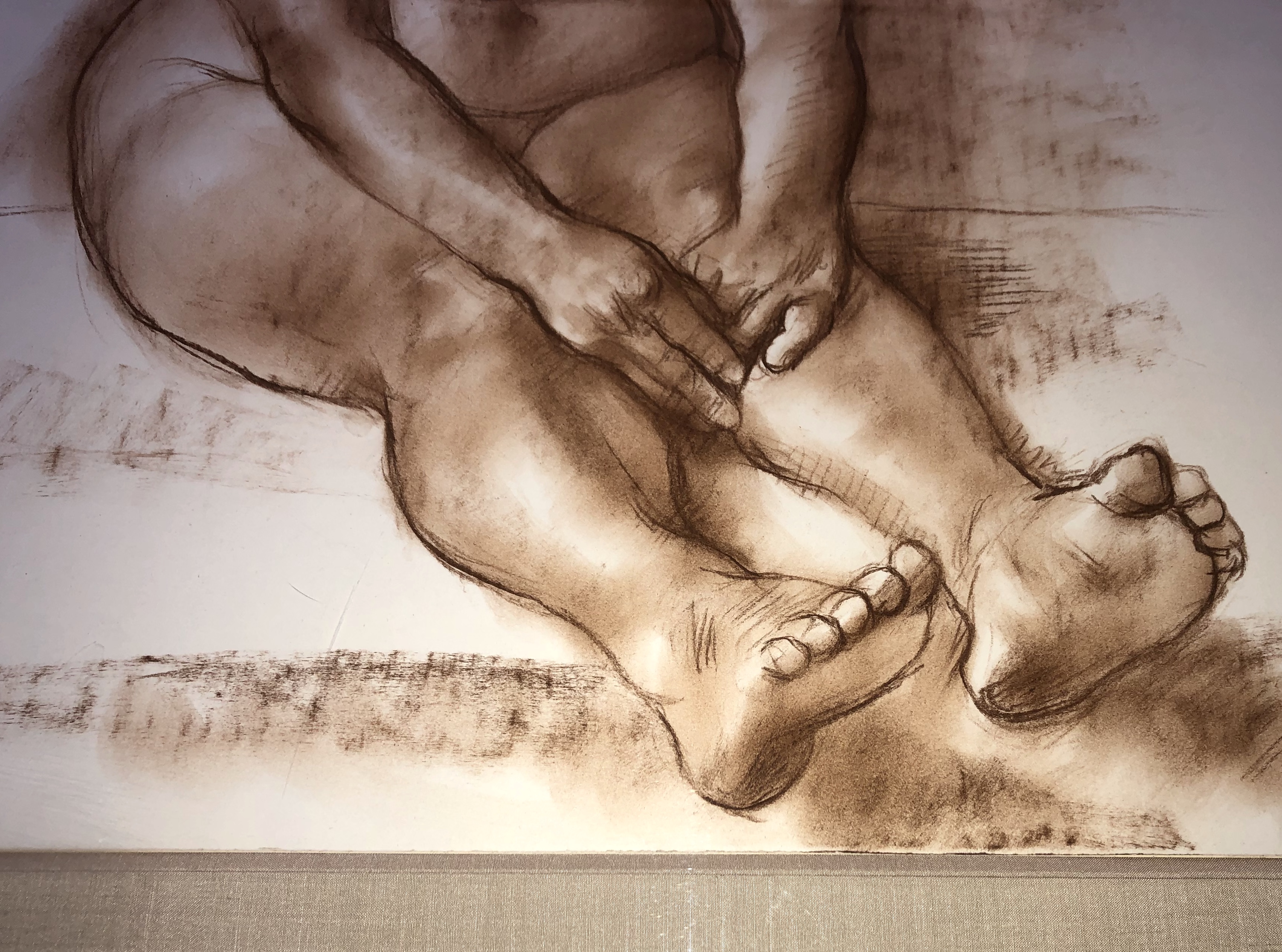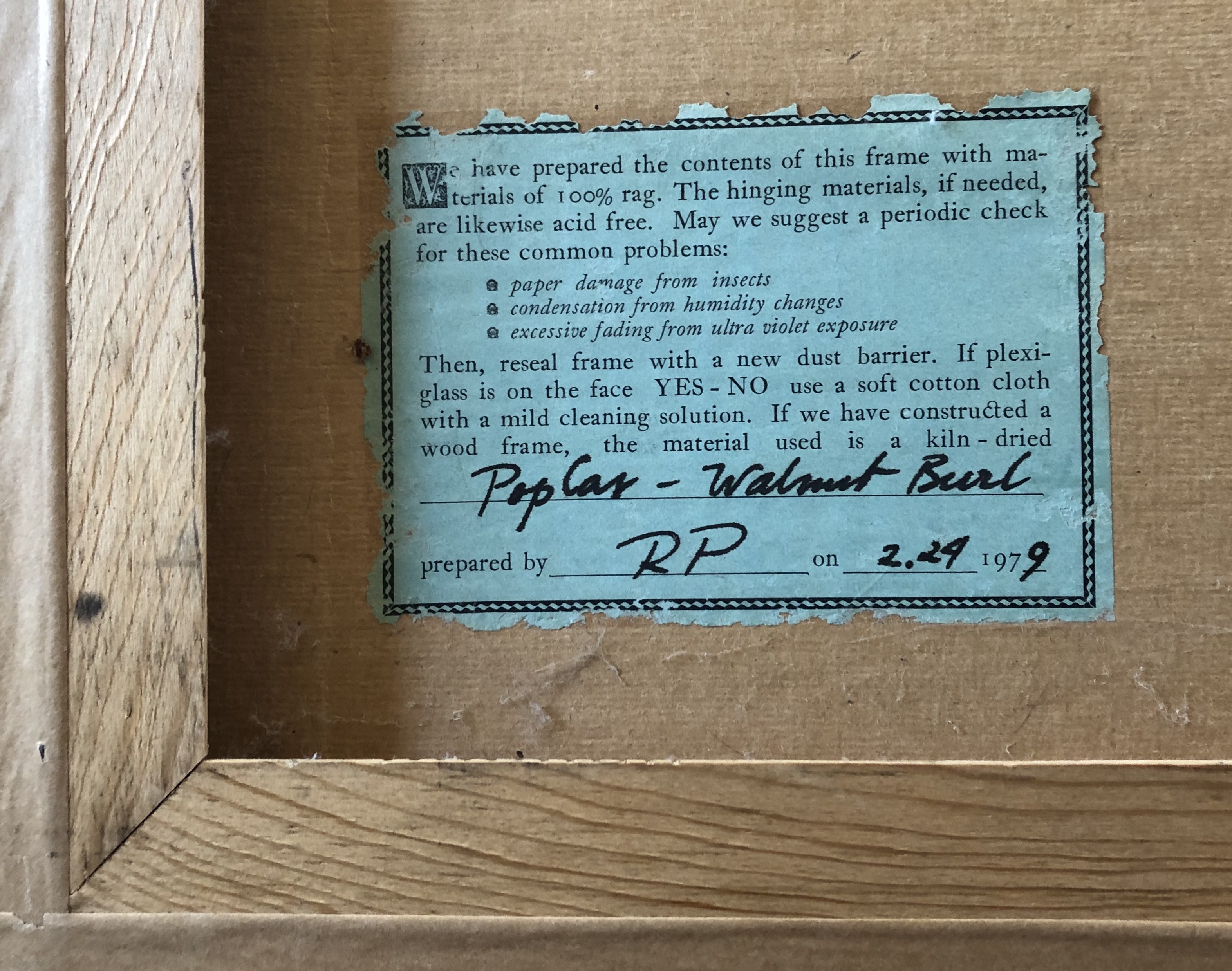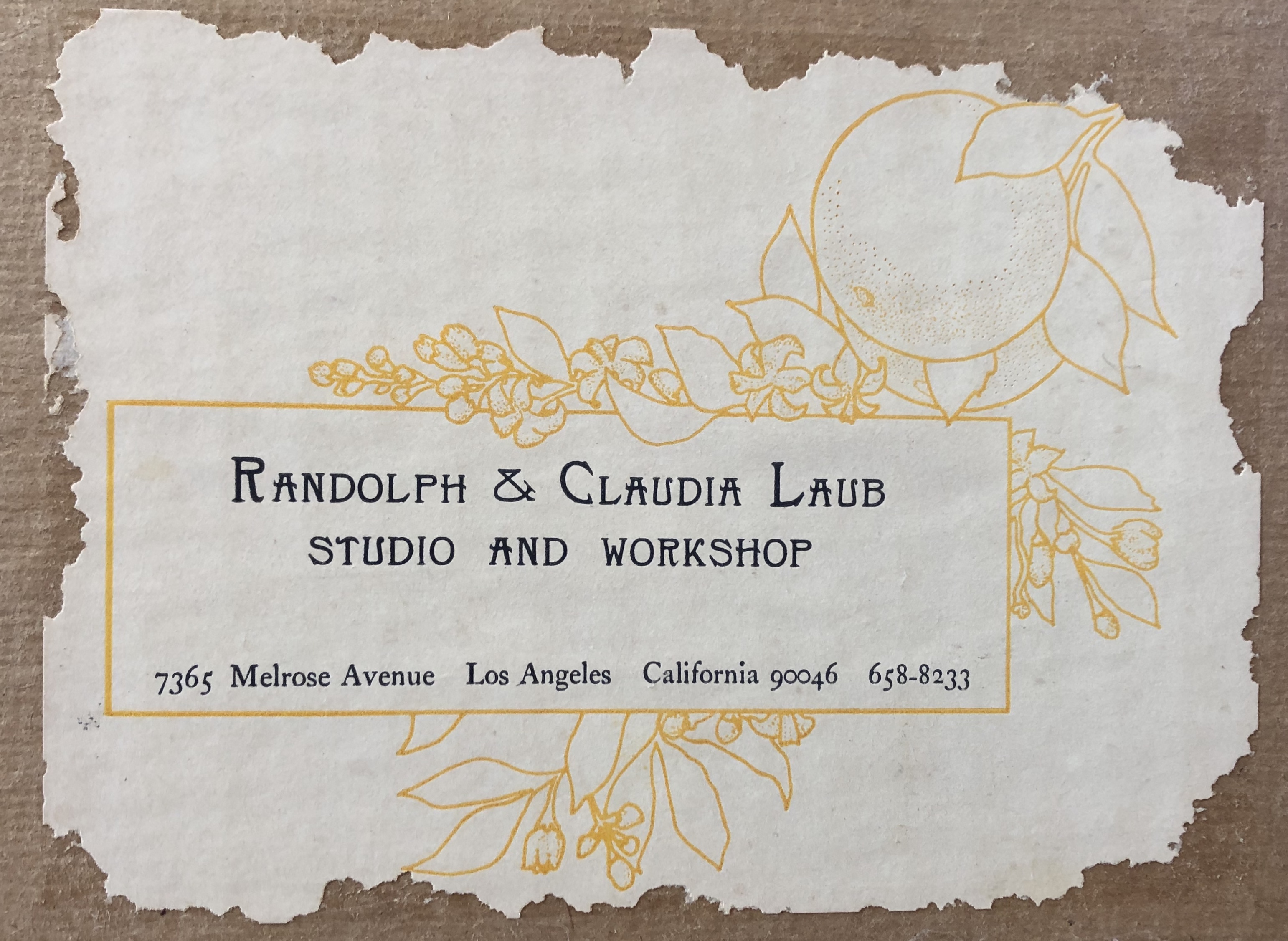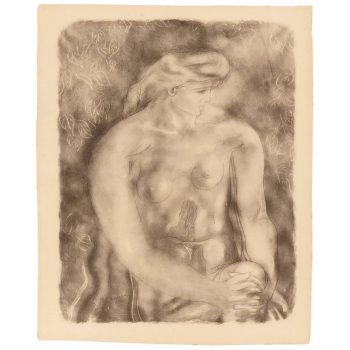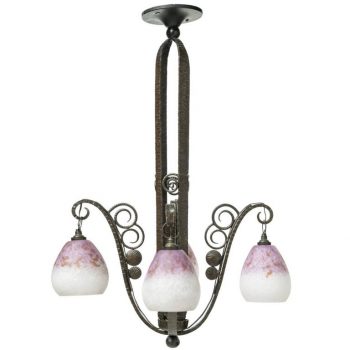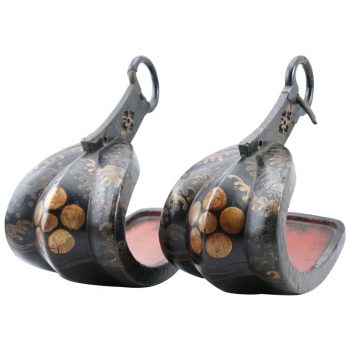Description
Francisco Zúñiga (Mexican, 1912-1998) Seated nude with extended legs. This woman with eyes heavy in meditation shows a myriad of emotions including humility, vulnerability and fatigue. The figure makes the viewer appreciate those who do all the mundane and heavy lifting service work for us teaching us sympathy and empathy. A very powerful work by Zuniga worthy of any art space. Black and sepia Conté Crayons made from a blend of natural pigments, kaolin clay, and graphite on paper.
Signed and dated lower left: Zúñiga / 1975
Ariel Zúñiga personally confirmed the authenticity of this drawing when I acquired it. This painting will be included in his forthcoming Francisco Zúñiga: Catalogue Raisonné, Volume V.
Sheet Size: 19-5/8 x 25-1/2 inches (49.8 x 64.8 cm)
Framed Dimensions 28.5 X 34 Inches Condition:
Excellent original condition. Sheet hinged to mat; pinholes to the corner, inherent to the works creation. Original solid wood frame with wear and touch ups.
José Jesús Francisco Zúñiga Chavarría (December 27, 1912 – August 9, 1998) was a Costa Rican-born Mexican artist, known both for his painting and his sculpture. Journalist Fernando González Gortázar lists Zúñiga as one of the 100 most notable Mexicans of the 20th century, while the Encyclopædia Britannica calls him “perhaps the best sculptor” of the Mexican political modern style. Zúñiga was born in Guadalupe, Barrio de San José, Costa Rica on December 27, 1912 to Manuel Maria Zúñiga and María Chavarría, both sculptors. His father worked as a sculptor of religious figures, and in stone work. His artistic inclinations began early and by the age of twelve had already read books on the history of art, artistic anatomy and the life of various Renaissance painters. At age fifteen he began working in his father’s shop. This experience sensitized him to shape and spaces. In 1926 he enrolled in the Escuela de Bellas Artes in Mexico, but left the following year to continue on his own.
As part of his self-study, he studied German Expressionism and the writings of Alexander Heilmayer, through which he learned of the work of two French sculptors, Aristide Maillol and Auguste Rodin, coming to appreciate the idea of subordinating technique to expression. Zúñiga’s painting and sculpting work began receiving recognition in 1929. His first stone sculpture won second prize at the Exposición Nacional de Bellas Artes. In the following two years continued to win top prizes at this event. This work made critics recommend him for study abroad. He won first prize in a 1935 Latin American sculpture competition, the Salón de Escultura en Costa Rica, for his stone sculpture La maternidad,[8] but the work caused controversy and the government rescinded its award. In the 1930s, he began to research pre Hispanic art and its importance to contemporary Latin American art, as well as what was happening artistically in Mexico. The scholarship never materialized so various colleagues organized his first individual exhibition in Costa Rica. The earnings from this endeavor earned his passage to Mexico City.
In 1936 he immigrated to Mexico permanently. In the capital, his first contact with Manuel Rodríguez Lozano, who opened his library to Zúñiga. He did some formal study at La Escuela de Talla Directa, working with Guillermo Ruiz, sculptor Oliverio Martinez, and painter Rodríguez Lozano. In 1937 he worked as an assistant to Oliverio Martínez on the Monument to the Revolution, the re-imagined building that had begun as the Federal Legislative Palace conceived during the regime of Porfirio Díaz. In 1938, he took a faculty position at La Esmeralda; he remained at that position until retiring in 1970. In 1958 he was awarded the first prize in sculpture from the Mexican National Institute of Fine Arts.



